ID Codes
ID Codes

| Index | Rear Axle | Old ID Codes |
New ID Codes |
Engine Codes | Abbrevs | Links |
Email |
||

Jump down to 1957 Sports
Jump down to Toyopet X
Jump down to Publica Sports
Jump down to Corona Sports
Jump down to EX-1
Jump down to EX-III
Jump down to EX-7
Jump down to RV-1
Jump down to Marinetta
Jump down to RV-2
Jump down to SV-1
Jump down to Gas Turbine GT45 & GT24
Jump down to CAL-1
Jump down to EX-11
Jump down to FX-1
Jump down to SV-3
Jump down to TAC3
Jump down to GTV
Jump down to FXV-II
Some information copied from Miyake's 2000GT (page no longer active) page.
Many of these models have other details and other pictures at
Toyota 2000GT.
(Click on his pictures to see details of each model.)
 |
  |
 |
 |
1957 |  |
 |
  |
 |
2 seater sports car from 1957.
This did not make production.
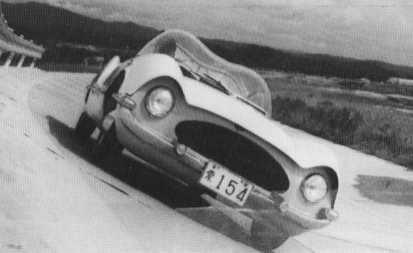
 |
  |
 |
 |
Toyopet X |  |
 |
  |
 |
Shown at the 1961 Tokyo Motor Show.
Based on the Crown.

 |
  |
 |
 |
Publica Sports |  |
 |
  |
 |
Shown at the 1962 Tokyo Motor Show.
The Publica Sports became the Toyota S800.
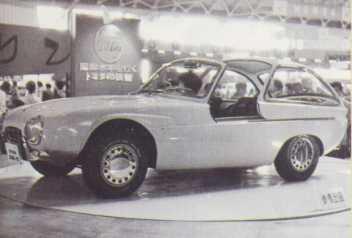
 |
  |
 |
 |
Corona Sports |  |
 |
  |
 |
Shown at the 1963 Tokyo Motor Show.
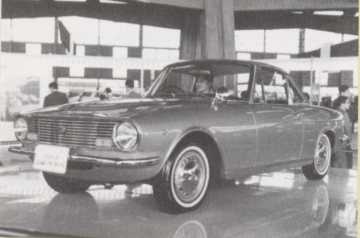
 |
  |
 |
 |
EX-1 |  |
 |
  |
 |
Shown at the 1969 Tokyo Motor Show.
The EX-1 was designed for long distance, high speed driving.
It had an electrically controlled roof mounted spoiler for high speed stability.
The wrap around insturment layout had its switches equidistant from the driver.
The EX-1 provided styling cues for the Celica released in Dec 1970.

 |
  |
 |
 |
EX-III |  |
 |
  |
 |
The EX-III was also shown at the 1969 Tokyo Motor Show.
Like the EX-1, the EX-III was also designed for long distance, high speed driving but it was a bigger car.
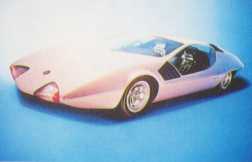
EX-III
 |
  |
 |
 |
EX-7 |  |
 |
  |
 |
The EX-7 was shown at the 1970 Tokyo Motor Show.

 |
   |
 |
 |
RV-1 & Marinetta |  |
 |
   |
 |
Shown at the 1971 Tokyo Motor Show.
This appears to be based on the prototype of the Celica liftback, released in Jan 1973.
The nose of the car looks more like the revised Celica nose from 1973, without the sloping indicators of the 1970-1972 celica.
The doors are reported to be gullwings, but I am not sure if they meant the main doors or the rear side windows.
Production Celica doors do not have window frames, so they probably meant the rear side windows.
The trailer included a tent and camping equipment. Its top cover could be used as a boat and could accept an outboard motor. This trailer was also shown (slightly modified and called the Marinetta) at the 1972 Tokyo Motor Show behind a standard Celica coupe.

Link to a French web page with a picture.
Compare it to my idea of a Celica wagon, done before I knew about the RV-1.
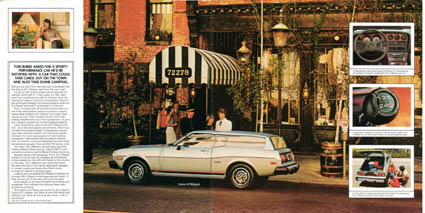
 |
  |
 |
 |
RV-2 |  |
 |
  |
 |
Shown at the 1972 Tokyo Motor Show.
The RV-2 was based on the Corona Mark II chassis and drivetrain.
The rear side windows opened out like clam shells to hold up a tent like covering.
This made the rear area into living quarters similar to a popup caravan.
A brochure was circulated around to dealers and magazines took the prototype for test drives but it went no further.




 |
  |
 |
 |
SV-1 |  |
 |
  |
 |
Shown at the Tokyo Motor Show in Oct/Nov 1971, the SV-1 was the prototype for the Celica liftback released in 1973.
The prototype was built on a TA22 GT chassis with frame number TA22-026004.
This was originally built in May 1971 as a Celica TA22 GT coupe.
The mechanicals of the TA22 GT were retained (1600cc 2T-G twincam engine).
Dual exhaust tips exited out the rear (production Celicas had a single exhaust tip).
The front of the interior was the same as the TA22 GT except for different fabric patterns on the seats.
The rear 2 seats were individually reclining using the same reclining hinges and latches as the front seats except that the rear latches were in the middle.
A centre padded vinyl console was between the 2 rear seats and the selt belts clipped into it when not in use.
The spare tyre sat vertically at the very rear of the cargo area under a vinyl cover.
Electric window lifts were used (optional but rare on the TA22 GT).
The TA22 GT's optional air conditioning was not present.
An electric aerial was put in the left rear quarter (TA22 had this on the left front wheel guard).
The SV-1 has a rear fuel filler (all production liftbacks had side fillers).
The SV-1 rear hatch glass was a bit larger than the production version.
The key hole for the hatch was on the beaver panel (it was on the hatch on production liftbacks).
The grill was an ST type - just like all 1973-1975 production liftbacks (even the GT models).
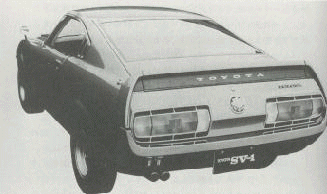
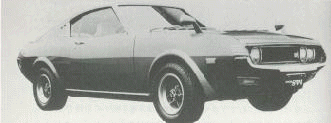
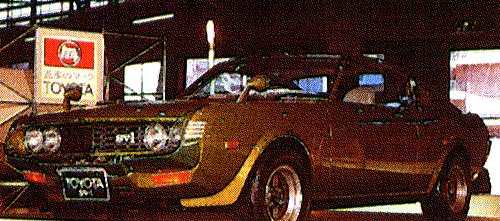
 |
  |
 |
 |
MP-1 |  |
 |
  |
 |
Shown at the 1975 Tokyo Motor Show.
A very modern looking people carrier.
The side door for the rear passenger had a lifting platform for wheelchair access.
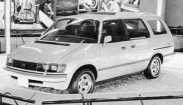
 |
  |
 |
 |
Gas Turbine GT45 |  |
 |
  |
 |
Shown at the 1975 Tokyo Motor Show.
A gas turbine engine.
One was displayed by itself and one was mounted in a Toyota Century.
The engine took a lot of room, so the Century was one of the few Toyotas with an engine bay big enough.
The engine was connected to an electrical generator connected to batteries, which then drove an electric motor connected to the front wheels.
Using kerosene, 160km/hr could be reached and 120km/hr using the batteries alone.
The Century was first triled in this manner in 1971 but nto shown to the public until 1975.
A similar system was trialed in 1971 on some Toyota buses.
Another version was shown at the 1977 Tokyo Motor Show (GT24) and another at the 1985 Tokyo Motor Show (Gas Turbine II in the GTV). The 1977 show also displayed a rotray engine.
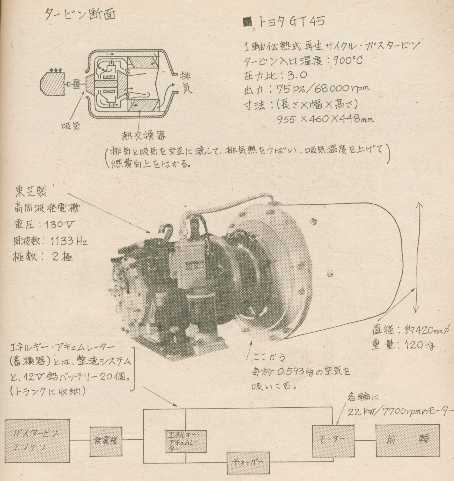 GT45
GT45
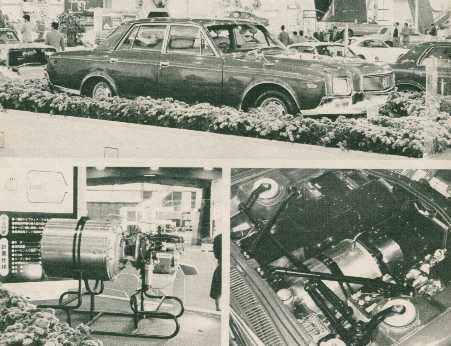 Century with GT24
Century with GT24
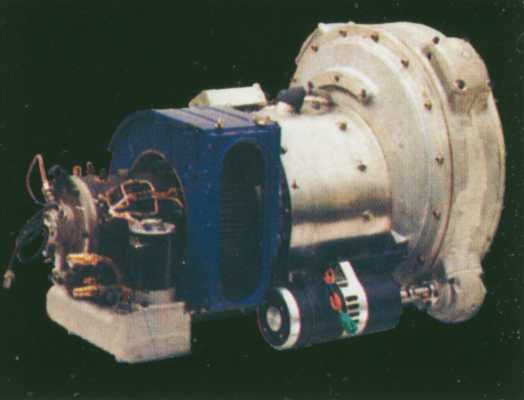 GT24
GT24
 Rotary
Rotary
 |
  |
 |
 |
CAL-1 |  |
 |
  |
 |
Shown at the 1977 Tokyo Motor Show and the 1978 Chicago Auto Show.
It was based on the prototype Supra, which was a stretched version of the Celica.
The CAL-1, Supra and Celica were all designed at Calty, Toyota's California design studio.
The rear decking opened into a pair of rear seats and the rear window opened into a wind deflector for the rear passengers.
Further portions of the rear decking could be removed to make it into a pickup.
The front was identical to the new Supra (not yet in production) and similar to the 1979 face lift used on the Celica.
Even though it was designed in California, it was right hand drive and had Japanese front mounted mirrors.

Link to closeup of picture in Chicago Auto Show.
 |
  |
 |
 |
EX-11 |  |
 |
  |
 |
Shown at the 1981 Tokyo Motor Show.
Based on the prototype Soarer, the EX-11 demonstrated advance electronics such as
electronic engine and drivetrain mangement, colour monitors and fibre optic wiring.

 |
  |
 |
 |
FX-1 |  |
 |
  |
 |
Shown at the 1983 Tokyo Motor Show and in Geneva in March 1984.
Colour CRT's were used in the dash to display speed, rpm, fuel, temperature, etc.
It used a prototype twin turbo form of the 1G-GE engine with twin turbos and variable cam timing. This engine later appeared as the 1G-GTE, slightly modified and without the variable cam timing. The use an automatic Electronically Controlled Transmission with overdrive.
It used a pneumatic suspension combined with the TEMS (Toyota Electronically Modulated Suspension system). The pneumatic suspension automatically raised and lowered the front and rear of the car separately for maximum stability. TEMS was also used on the Supra and the Soarer.
Many exotic materials were used, including Fibre Reinforced Metal and Shape Memory Effect Alloy.

 |
  |
 |
 |
SV-3 |  |
 |
  |
 |
Shown at the 1983 Tokyo Motor Show.
Prototype for the MR-2.
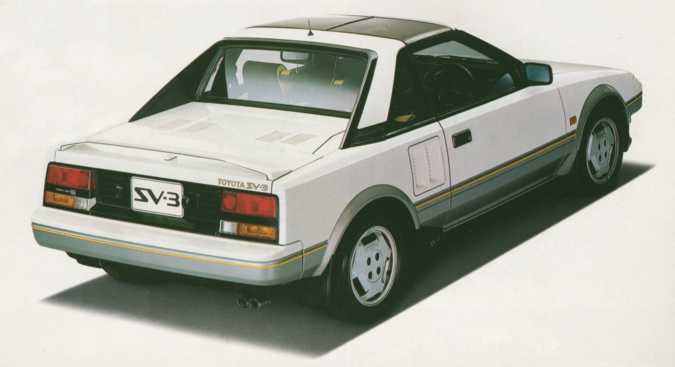
 |
  |
 |
 |
TAC3 |  |
 |
  |
 |
Shown at the 1983 Tokyo Motor Show.
A light 4WD, 3 seater vehicle for the youth market. The driver had a seat mounted centrally in the front. The passengers sat in 2 side by side seats in the rear. The front windscreen came in a tall version and a short sports version.
It also came with a small 2 wheel trailer with the same styling. The trailer could hold an additional 4 spare wheels above the towing arm.
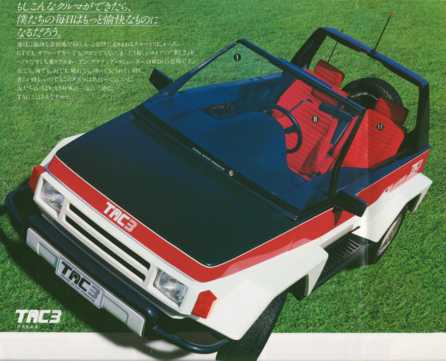

 |
  |
 |
 |
GTV |  |
 |
  |
 |
Gas Turbine Vehicle.
Shown at the 1985 Tokyo Motor Show.
Used the Gas Turbine II engine.
A regenerator took waste heat and transferred it to the incoming air, increasing efficiency.
A one stage turbine was used to drive the compressor while a second turbine was connected to the driveshaft.
The second stage also took the place of the fluid flywheel (torque convertor).
The main advantages of a gas turbine engine are:
- fewer moving parts,
- efficient rotational movements instead of inefficient reciprocating movements,
- more tolerant of different fuel types and grades,
- no need for water cooling, water pumps and radiators.
The main disadvantages are:
- high internal temperatures,
- high precision required during manufacturing (costly).
A Chrysler Gas Turbine brochure explains this quite well.
Earlier versions of the Gas Turbine engine were shown at the 1975 and 1977 Tokyo Motor Shows.
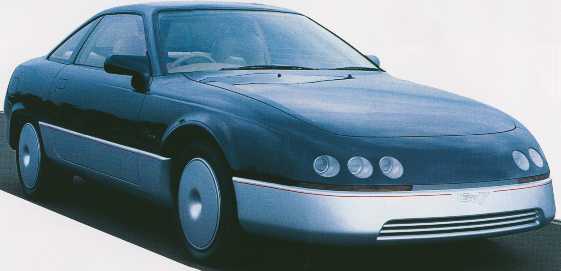
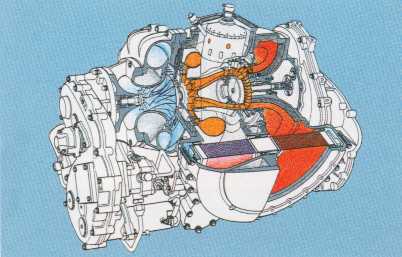
 |
  |
 |
| FXV-II | ||
 |
  |
 |
Future eXperimental Vehicle II.
Shown at the 1987 Tokyo Motor Show.
It had an all alloy, quad cam, 32 valve, EFI, 3.8 litre V8 engine. Not clear if the engine was a development of the V series engines used in the Century or a prototype of the 1UZ-FE which was later used in the Lexus LS400 (some 1UZ-FE prototypes from about 1987 were the same size). The radiator cooling fans were hydraulically driven under computer control.
The drivetrain was Toyota's only 4WD system using a V8.
The front/rear split was normally 30/70 but could change up to 50/50.
A 4 speed electronically controlled automatic gearbox was used.
Electronic Skid Control and Traction Control were included.
The Pegasus (Precision Engineered Geometrically Advanced SUSpension) was a prototype for new suspension used on later Cressidas, Soarers and Supras.
Not sure if it included 4 wheel steering.
Inside had GPS navigation and computerised CRT displays.
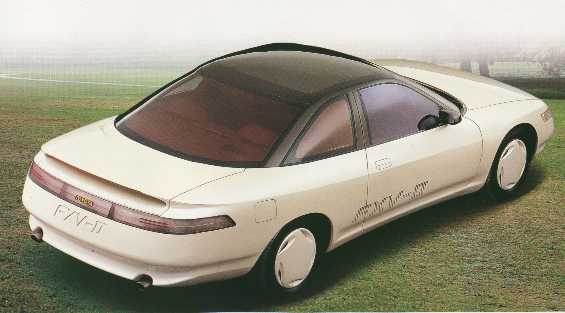

Last updated 27 Dec 2007